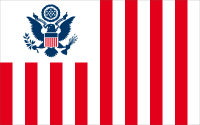
Customs is an authority or agency in a country responsible for collecting tariffs and for controlling the flow of goods, including animals, transports, personal effects, and hazardous items, into and out of a country. Traditionally, customs has been considered as the fiscal subject that charges customs duties and other taxes on import and export. In recent decades, the views on the functions of customs have considerably expanded and now covers three basic issues: taxation, security, and trade facilitation.
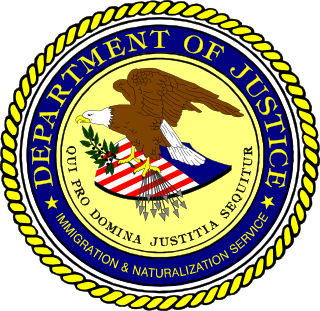
The United States Immigration and Naturalization Service (INS) was an agency of the U.S. Department of Labor from 1933 to 1940 and the U.S. Department of Justice from 1940 to 2003.
U.S. Immigration and Customs Enforcement (ICE) is a federal law enforcement agency under the U.S. Department of Homeland Security. ICE's stated mission is to protect the United States from the cross-border crime and illegal immigration that threaten national security and public safety.

The United States Border Patrol (USBP) is a federal law enforcement agency under the United States Customs and Border Protection (CBP) and is responsible for securing the borders of the United States. According to its web site in 2022, its mission is to "Protect the American people, safeguard our borders, and enhance the nation’s economic prosperity."

The Canada Border Services Agency is a federal law enforcement agency that is responsible for border guard, immigration enforcement, and customs services in Canada.

United States Customs and Border Protection (CBP) is the largest federal law enforcement agency of the United States Department of Homeland Security. It is the country's primary border control organization, charged with regulating and facilitating international trade, collecting import duties, as well as enforcing U.S. regulations, including trade, customs and immigration. CBP is one of the largest law enforcement agencies in the United States. It has a workforce of more than 45,600 federal agents and officers. It is headquartered in Washington, D.C.
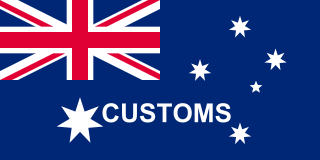
The Australian Customs and Border Protection Service was an Australian federal government agency responsible for managing the security and integrity of the Australian border and facilitating the movement of legitimate international travelers and goods, whilst protecting the safety, security and commercial interests of Australians. It was headquartered in Canberra and employed over 5,800 people around Australia and overseas.

A border guard of a country is a national security agency that performs border security. Some of the national border guard agencies also perform coast guard and rescue service duties.

Air and Marine Operations (AMO) is a federal law enforcement component within U.S. Customs and Border Protection (CBP), an agency of the United States Department of Homeland Security (DHS). AMO's mission is to protect the American people and nation's critical infrastructure through the coordinated use of air and marine assets to detect, interdict and prevent acts of terrorism and the unlawful movement of people, illegal drugs, and other contraband toward or across the borders of the United States. Air and Marine Operations Agents and Officers are endowed with the authority to enforce Title 8 and Title 19 (Customs) of the United States Code in addition to the general law enforcement powers bestowed upon federal law enforcement agents.

The Border Patrol Tactical Unit (BORTAC) is the tactical unit of the United States Border Patrol. In 2007, BORTAC was placed under the command of the newly formed Special Operations Group (SOG) together with the Border Patrol Search, Trauma, and Rescue Unit (BORSTAR).
Operation Gatekeeper was a measure implemented during the presidency of Bill Clinton by the United States Border Patrol, aimed at halting illegal immigration to the United States at the United States–Mexico border near San Diego, California. According to the INS, the goal of Gatekeeper was "to restore integrity and safety to the nation's busiest border."

The Office of Field Operations (OFO) is a federal law enforcement agency within the U.S. Customs and Border Protection (CBP) responsible for managing United States customs operations at 20 Field Operations offices, 328 ports of entry, and 16 pre-clearance stations in Canada, Ireland, the UAE, and the Caribbean. Headed by an Executive Assistant Commissioner, OFO directs the activities of more than 27,000 employees, including more than 22,000 CBP Officers and Agriculture Specialists. CBP Office of Field Operations is the largest component in CBP.
The Interagency Border Inspection System (IBIS) is a United States computer-based system that provides the law enforcement community with files of common interest. IBIS provides access to the Federal Bureau of Investigation National Crime Information Center (NCIC) and allows its users to interface with all 50 U.S. states via the National Law Enforcement Telecommunications System (NLETS). IBIS physically resides on the Treasury Enforcement Communications System (TECS) at the U.S. Customs and Border Protection Data Center.

The Secure Electronic Network for Travelers Rapid Inspection (SENTRI) provides expedited U.S. Customs and Border Protection (CBP) processing, at the U.S.-Mexico border, of pre-approved travelers considered low-risk. Voluntarily applicants must undergo a thorough background check against criminal, customs, immigration, law enforcement, and terrorist databases; a 10-fingerprint law enforcement check; and a personal interview with a CBP Officer. The total enrollment fee is $122.50, and SENTRI status is valid for 5 years.
The Smuggling Interdiction and Trade Compliance Program is a component of the United States Department of Agriculture (USDA) Animal and Plant Health Inspection Service (APHIS), Plant Protection and Quarantine (PPQ). The mission of the Smuggling Interdiction and Trade Compliance Program is to detect and prevent the unlawful entry and distribution of prohibited and/or non-compliant products that may harbor exotic plant and animal pests, diseases or invasive species.
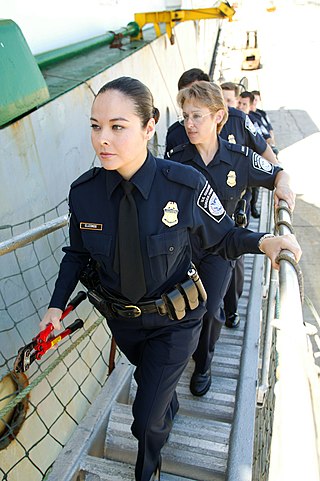
The federal government of the United States empowers a wide range of federal law enforcement agencies to maintain law and public order related to matters affecting the country as a whole.

The Royal Malaysian Customs Department is a government department body under the Malaysian Ministry of Finance. RMCD functions as the country's main indirect tax collector, facilitating trade and enforcing laws. The top management of JKDM is led by the Director General of Customs and assisted by 3 deputies, namely, the Deputy Director General of Customs Enforcement/Compliance Division, the Deputy Director General of Customs Customs/Inland Tax Division and the Deputy Chief Director of Customs Management Division. The Royal Malaysian Customs Department consists of several divisions, namely the Enforcement Division, the Inland Tax Division, the Compliance Division, the Customs Division, and the Technical Services Division.
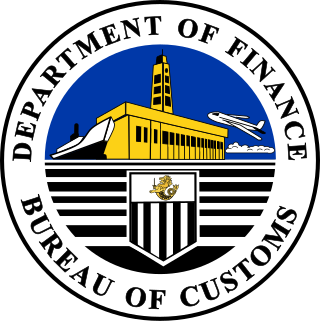
The Bureau of Customs is a Philippine government agency under the Department of Finance. The Bureau of Customs was established on February 6, 1902 by the Insular Government of the Philippine Islands of the United States of America, during the American Colonial Era of the Philippines.
A customs declaration is a form that lists the details of goods that are being imported or exported when a citizen or visitor enters a customs territory. Most countries require travellers to complete a customs declaration form when bringing notified goods across international borders. Posting items via international mail also requires the sending party to complete a customs declaration form.

